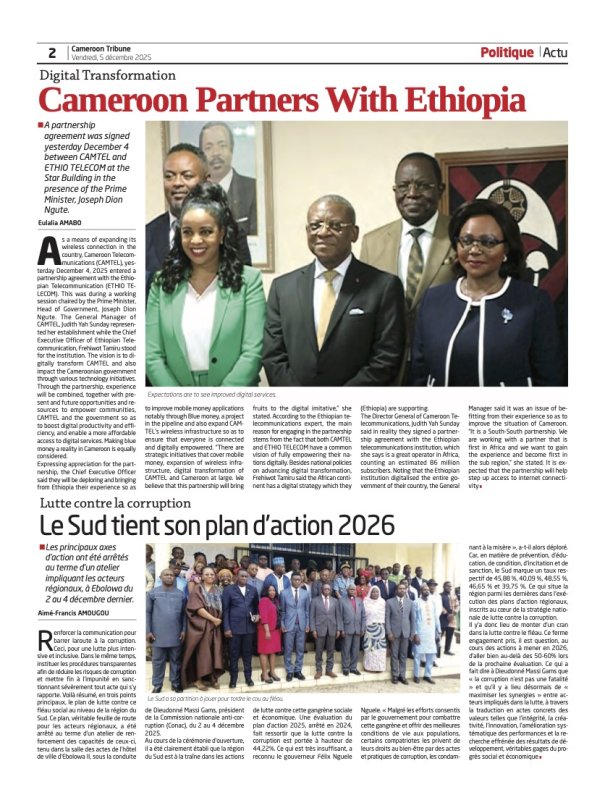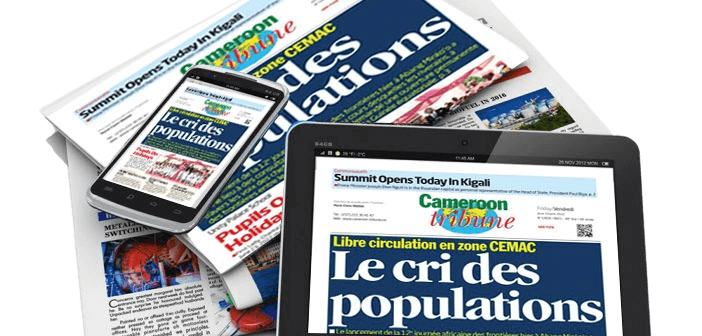Multi-model Transport System: Urgent Need To Accelerate Project
- Par Roland MBONTEH
- 07 Apr 2025 13:37
- 0 Likes
The transport system remains crucial to the economy of any country and its importance cannot be overstated. An efficient transport system facilitates trade as it connects producers to consumers, enabling the exchange of goods and services. It also improves on the competitiveness of the economy by reducing logistic costs; enhance supply chain and increasing productivity. All of these with the ultimate aim of boosting economic growth. Cognizant of the vital role of a good transport system, the government of Cameroon has not been sparring efforts to modernize the transport system.
Though the transport system has been undergoing some improvements over the years, challenges to take it to a higher standard and render it more efficient are still abound. With the support of varied donor partners like the World Bank, African Development Bank, French Development Agency, European Union and China among others, the government has been pursuing reforms to improve the transport system in Cameroon.
To change the narrative of poor transport facilities across the country, the government has opted to develop a multi-model transport system. The project is however snail-paced making travelling from one part of the country to another a nightmare despite the existence of several possibilities. Road, air, railway and even river ports offer several alternatives to travel across the country. Cameroon’s multi-model transport system project thus aims to increase efficiency and effectiveness by integrating various models of transportation, including road, rail, air and sea to facilitate cost-effective movement of goods and people. Various initiatives have been taken by the government and partners to develop the different components of the country’s multi-model transport system. As far as road transport is concerned, Cameroon has an extensive network of roads, including highways, rural roads that connect major cities and towns.
As at 2024 for instance, Cameroon had a length of tarred roads of 10,461km according to statistics from the Ministry of Public Works. Of these numbers of kilometres of tarred roads includes expressways and trans-border corridors linking neigbouring countries like Central Africa Republic, Chad, Gabon, Congo, Equatorial Guinea and Nigeria. Though the state of the roads leaves much to be desired, several rehabilitation projects on sections of the roads are ongoing. For example, in 2016, the government launched a tender for the multi-model transport project which aimed at increasing the efficiency and effectiveness along the Yaounde-Kousseri corridor. It entailed the modernization of the switch points and related signaling systems and the rehabilitation of selected bridges which have exceeded their lifespan. Other road rehabilitation and construction projects are ongoing across the country to enable the smooth transportation of people and goods.
In the air transport subsector, Cameroon counts a couple of international airports and local airports to connect certain major cities. Rehabilitation of some of these airports and modernization of the air transport system to meet international aviation standards have been on course for the past years. Even the railway transport has seen major changes. Feasibility studies for the extension of the railway line from Ngaoundere to N’Djamena which will connect the Far North and the Chadian capital to ease freight transportation. With the seaports, the second phase of Kribi Deep sea port has been launched while the modernization of the ...
Cet article complet est réservé aux abonnés
Déjà abonné ? Identifiez-vous >
Accédez en illimité à Cameroon Tribune Digital à partir de 26250 FCFA
Je M'abonne1 minute suffit pour vous abonner à Cameroon Tribune Digital !
- Votre numéro spécial cameroon-tribune en version numérique
- Des encarts
- Des appels d'offres exclusives
- D'avant-première (accès 24h avant la publication)
- Des éditions consultables sur tous supports (smartphone, tablettes, PC)











Commentaires